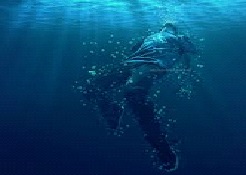Drowning Causes, Symptoms, Diagnosis and Treatment

What Is Drowning?
Drowning is explained as a method of facing respiratory impairment from the liquid immersion. Most possible drowning outcomes are further categorized as morbidity, death, as well as, no morbidity.
The rate of death from the drowning doesn’t imitate the potential disability or morbidity because of the injury to brain for such sufferer who survives from a drowning episode. Many countries don’t keep drowning non-fatal statistics.
What Are The Causes Of Drowning?
Major drowning causes are as follow:
- Not able to swim properly.
- Get panic inside the water.
- Near water bodies, leaving children to be unattended.
- Get fall from the thin ice
- Increased consumption of alcohol during swimming or boating
- Seizure concussion during water
- The attempt of suicide
What Are The Symptoms Of Drowning?
The symptoms, as well as consequences of drowning widely varied. A victim of drowning may explain no symptoms and complaints, or it may be dead.
The sufferer of drowning is found very rare who is available as in water thrashing. In its place, most drowning is not witnessed, plus, the person is found in water submerged or floating.
However, for all those who still alive, may become confused, anxious, and breath shortness. Another time, it is considered as brain and lungs functions that are the mainly concerned in the victims of drowning.
How Is Drowning Diagnosed?
- Initially, the assessment of any victim suffering from drowning will start with the events history.
- The age of the patient
- Presence of any particular underlying health problems
- The use of any prescribed or non-prescribed therapy or medications and if yes, then the history of drugs and disease.
- The attendance of the person which has been found before.
- Is any potential presence of trauma is linked with the condition, drowning?
- The presence of loss of consciousness warning during, before, or after the episodes of drowning.
- The presence of witnessed seizure.
- The chest pain or before going into the water, the feeling of cardiac arrest suddenly.
- The behavioral changes
- Feeling to vomit.
The vital symptoms are monitored with the help of physical examination. The proper evaluation of ABC (airway, breathing, and circulation must be done. A proper and careful body examination is required for the complete body, especially by focusing the neurological examination to evaluate functioning of brain. The examination of lung and heart will be performed also.
How Is Drowning Treated?
At the edge of water, the treatment started for drowning. The AHA (American Heart Association) suggests that one person if possible is sent for the activation of EMS (Emergency Medical Services) after calling at 911. One more thing is by sending an AED (automatic external defibrillator) to the side of victim.
If there is no pulse, means a person isn’t breathing or alive. The immediate start of CPR should be done. In the special condition, drowning, there is a no indication of CPR. If a neck injury is there, special assistance is required further for victim injury and care.
By : Natural Health News




